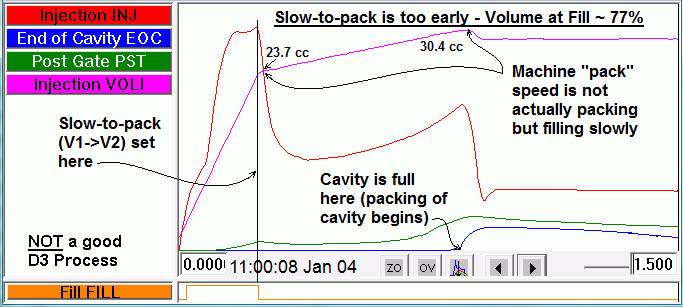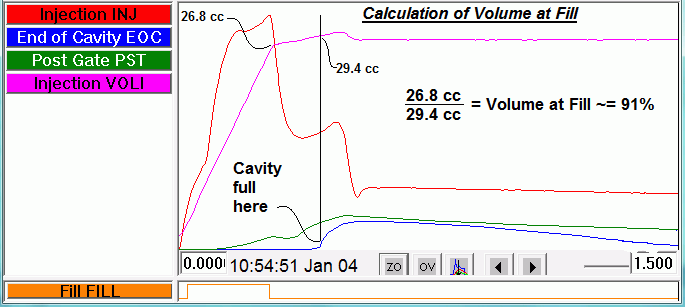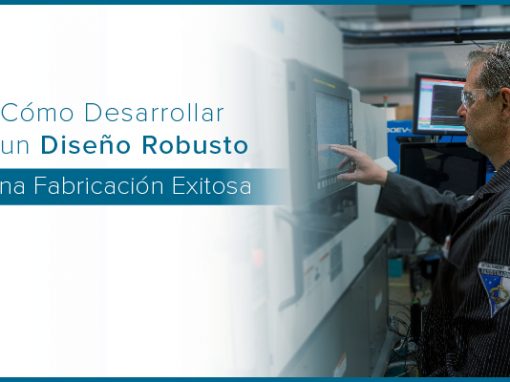Tip of the Day 170: Estimate “Decoupled-ness” with “Volume at Fill”
At several customers I have observed “decoupled” processes that were much too decoupled. The cavity can be seen to fill much, much later than the time the machine control slows to pack†. Here is an example:

The eDART ™ calculates the summary value “Volume at Fill” to help you refine a decoupled process. In order to use this value properly…
- Be sure to set the fill volume at the slow-to-pack† point (see tip #53) and adjust it each time you adjust the machine.
- Also, set the definition of a full cavity (tip #19) in order to get good values.
I have found that, in high speed, thin-wall applications, a Volume at Fill number of about 87% works well. This ensures that the cavity is as full as possible without flashing the part when the viscosity drops. In thick-wall applications you can adjust the slow-to-pack point‡ until Volume at Fill reads 97% or 98% without risk of flash with lower viscosity material lots. Sometimes these parts look quite full. But much of the “un-fullness” is massive sink.
One caution in high-speed, thin-wall applications: If the screw begins to bounce back before the cavity is full then the Volume at Fill number is meaningless.
The rest of this tip describes more of the why’s and how’s of “Volume at Fill”.
† In decoupled 3 molding, “slow to pack” is at the transition from filling speed to packing speed, usually V1 to V2. In decoupled 2, “slow to pack” is at transfer from speed to pressure (or “inject” to “pack & hold”).
‡ Always remember to re-set the fill volume on the eDART when adjusting transfer or slow-down.
Sometimes observing short shot to set the machine transition point does not indicate a true “95%” full part. The forums and blogs are full of debates about whether 95% is the correct number, or 90% or 98% etc. And whether this is by weight in a full and packed part or just a full one. Or visual. Etc. etc.
The objective in decoupled filling is to fill the cavities as fast and as far as the machines will allow without creating fill defects or too much variation from material changes (i.e. shorts or flash). Use the Volume at Fill to help increase the fullness of cavities at slow-to-pack while limiting the risk.
There is a Volume at Fill value for each “location” (cavity) or simply “In Cavity” for a single cavity mold. You can watch these on the Cycle Values, plot them on the summary graph or set alarms around them. And you can compare the “decoupled-ness” of different cavities to each other.
The eDART calculates Volume at Fill by dividing the volume of material injected (screw volume) at the slow-to pack point† by the screw volume when the cavity is full. This is expressed as a percentage.
Here is an example with ABS in a modestly thin-wall part.

You can still see a rather significant percentage of the slow pack-speed phase (after V1->V2) appears to be filling the part at a slower speed (from the machine’s viewpoint). But note the high injection peak pressure of 23 Kpsi (~ 1600 bar). While this pressure is dissipating the cavity is still filling rather quickly. With the thin-ish wall we probably do not want to adjust our V1->V2 postion too much further in to achieve 95% or we could risk flashing the mold if the material viscsoity dropped.

